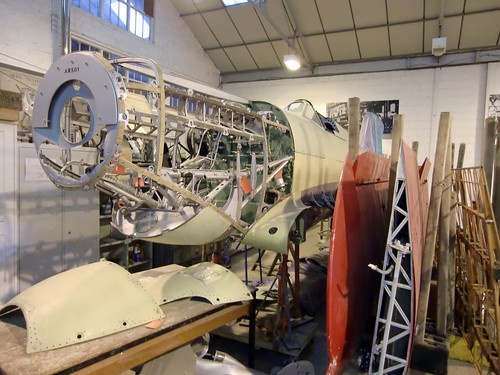 I've neglected to blog about the 22nd of last month, until now. It was a moderately busy day, and I've fairly recently finished putting a bunch of photos from then up on Flickr. But actually, those only cover an early part of the day.
I've neglected to blog about the 22nd of last month, until now. It was a moderately busy day, and I've fairly recently finished putting a bunch of photos from then up on Flickr. But actually, those only cover an early part of the day.Specifically, we made a round trip to Cambridge to catch a couple of things, starting with a visit to the Fitzwilliam Museum, where for one thing, this year's Sculpture Promenade is in full swing. That was the point when I managed to capture a decent array of pictures. As in previous years, it proved amiably brain-stretching; we were mildly amused to run into a miniature prototype for the monumental Peter Randall-Page piece that we met at the Eden Project a while back.
But we had gone to the museum chiefly to catch something that isn't likely to come back often in our lifetimes; an exhibition of 2,000-year-old tomb treasures from China, loaned from two different Chinese museums - so to see all this lot would normally require a long round trip. There was ... a lot of jade, naturally, including two of the famous jade burial suits - not so much jade armour as full-body casings, the product of imperial wealth and the belief that jade preserved the body against corruption. There were also great bronze vessels and domestic bits and pieces, which had (just) survived two millennia of burial. But I guess that the things that spoke most effectively, as art, were rather inevitably the fairly small statuettes, figures from courtly life - especially some swirling dancers, their infeasibly long sleeves falling to the floor oddly like cartoons.
But a piece of art doesn't have to be twenty centuries old to be a period piece. That evening, we had tickets for Noel Coward's Volcano at the Arts Theatre, a relic of an earlier era, but not without amusement value. Actually, this play wasn't produced in Coward's own lifetime, initially because it proved impossible to get Katharine Hepburn on board to play the lead, but probably mostly because the sexual - and especially homosexual - content was a bit heavy for the period. It hasn't had much attention since, either; this is apparently its first-ever major production, complete with Jenny Seagrove gamely tackling the Hepburn maturely-repressed-sexy role. (No other cast members whose names I recognised, I'm afraid; I mostly ended up thinking that a Noel Coward play probably has to feature actresses with names like Finty Williams and Perdita Avery.) I can't say that it struck me as a major work of art, and it's probably not one of Coward's greatest pieces, but I laughed a bit, thought a very little, and reckoned that the staging was pretty good.
The sexual content was clear enough, incidentally, but obviously no big deal by modern standards. I suspect that it took a bit of effort from the director and cast to make the gay element even clearly noticeable, and it represented a rather small twist late in the plot even then. It was hard to avoid feeling that the volcanic eruption - however well staged - ended up as a bad case of the pathetic fallacy being used for emphasis.
But it was something to be seen. Still, it was the Chinese antiquities that were something not to be missed.




